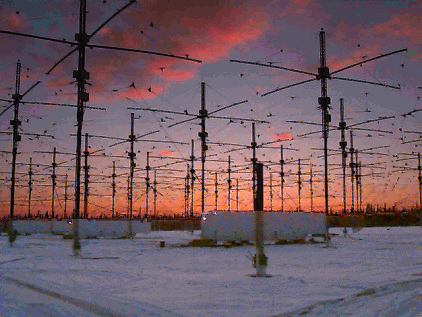HAARP Technology Unveiled: Exploring the Science and Myths

In the realm of conspiracy theories and scientific mysteries, one technology often stands out: HAARP. The High-Frequency Active Auroral Research Program, abbreviated as HAARP, has captured the imagination of many, sparking discussions ranging from legitimate scientific research to speculative fiction. In this blog post, we’ll delve into the world of HAARP technology, exploring its origins, purpose, capabilities, and debunking some of the misconceptions surrounding it.
HAARP technology, or the High-Frequency Active Auroral Research Program, stands as a mesmerizing testament to human innovation and scientific curiosity. Nestled in the remote Alaskan wilderness, this enigmatic array of antennas and transmitters unlocks the secrets of the ionosphere, Earth’s electrified atmospheric layer. As radio waves pulse skyward, they induce controlled disturbances, unveiling the intricate dance between charged particles and magnetic fields. Critics have woven speculative narratives, attributing to HAARP everything from mind control to weather manipulation, evoking a sense of intrigue that borders on science fiction.
Yet, at its core, HAARP technology is a pursuit of knowledge, unraveling the mysteries of space weather’s impact on satellite communication, navigation systems, and even power grids. The technology’s potential extends to improving radio communication, enhancing understanding of geomagnetic storms, and perhaps fostering advancements in earthquake mitigation.
HAARP technology true allure lies not in shadowy conspiracies, but in its role as a beacon of human intellect focused on deciphering the boundless complexities of our planet and the cosmos. It serves as a shimmering bridge between the terrestrial and the celestial, inviting us to gaze upward with wonder and aspire to comprehend the intangible forces that shape our existence.
What is HAARP technology?
HAARP technology is a research program that was initiated in the 1990s by the United States Air Force, the U.S. Navy, the Defense Advanced Research Projects Agency (DARPA), and the University of Alaska. Its primary facility is located in Gakona, Alaska. The program was designed to study the ionosphere – a region of the Earth’s upper atmosphere that plays a crucial role in radio wave propagation and communication.
The Science Behind HAARP technology
At its core, HAARP technology is essentially an array of high-frequency radio transmitters and antennas. These instruments emit radio waves into the ionosphere, creating controlled disturbances. The goal of HAARP is to understand how these disturbances affect the ionosphere, which, in turn, helps scientists advance their knowledge of radio wave interactions, space weather, and communications technologies.
HAARP’s Capabilities and Applications
One of the key areas of research HAARP technology focuses on is understanding the behavior of charged particles in the ionosphere. By manipulating the ionosphere, researchers can learn more about how radio waves propagate, potentially leading to improvements in communication and navigation systems, particularly in challenging conditions like during solar storms.
The research conducted at HAARP technology has broader implications for understanding space weather, which can impact satellite operations, power grids, and even radio communication. Therefore, the study of the ionosphere has practical applications beyond just scientific curiosity.
Separating Fact from Fiction
Over the years, HAARP has been shrouded in conspiracy theories and sensational claims, some of which suggest that it’s a weather control device, a mind control weapon, or even a tool for causing natural disasters. However, it’s essential to approach these claims with critical thinking and skepticism. The scientific consensus is that HAARP’s capabilities are far from the exaggerated claims often made in conspiracy circles.
Conclusion
While HAARP has undoubtedly been the subject of intrigue and speculation, it’s crucial to recognize that its primary purpose is scientific research. The program’s goal is to advance our understanding of the ionosphere and its interactions with radio waves, which has important applications in communication, navigation, and space weather prediction.
As we navigate an era of rapid technological advancement, it’s essential to be discerning consumers of information. Engaging with credible sources and understanding the scientific basis behind technologies like HAARP can help us distinguish between genuine research and unfounded conspiracy theories.
Also, Read About The Digital Frontier: Exploring the Ever-Evolving Landscape of Digital Technology



